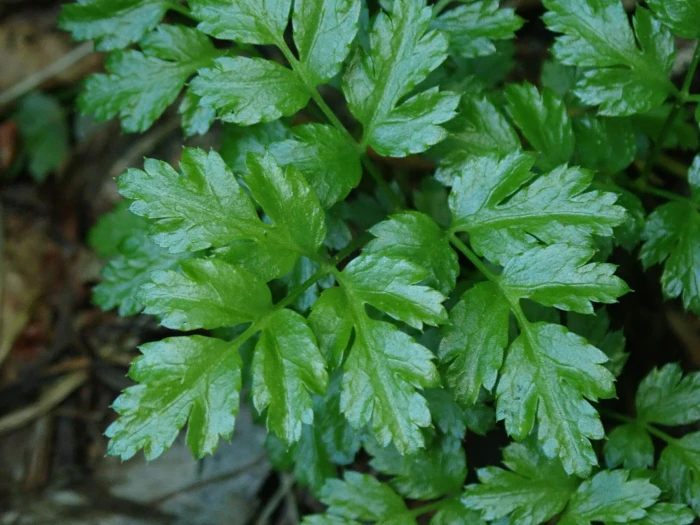Fernleaf Goldthread
(Coptis aspleniifolia)
Fernleaf Goldthread (Coptis aspleniifolia)
/
/

Nolan Exe
CC BY 4.0
Image By:
Nolan Exe
Recorded By:
Copyright:
CC BY 4.0
Copyright Notice:
Photo by: Nolan Exe | License Type: CC BY 4.0 | License URL: http://creativecommons.org/licenses/by/4.0/ | Rights Holder: Nolan Exe | Publisher: iNaturalist | Date Created: 2022-06-27T06:57:47-07:00 |

























Estimated Native Range
Climate Requirements
| • Precipitation | 95" - 115" |
| • High Temp. | 57°F - 89°F |
| • Low Temp. | 13°F - 37°F |
Summary
Coptis aspleniifolia, commonly known as Fernleaf Goldthread, is an evergreen perennial herb native to the moist, acidic soils of the understory in temperate rainforests and wet woods. It is found in the northern regions of British Columbia, Alaska, and extends down the Cascades into Washington. Fernleaf Goldthread typically grows to a modest height of 6-10 inches (15-25 cm) with a similar spread, and it features delicate, fern-like, dark-green, glossy leaves. Its pale greenish-white flowers bloom in early spring and are not particularly showy, but they add subtle interest to the woodland garden. The plant also produces small, thread-like rhizomes that are bright yellow, which is how it gets its common name.
Fernleaf Goldthread is valued for its ornamental foliage and its use as a low-maintenance ground cover in shady garden spots. It is also appreciated for its medicinal properties, as the rhizomes contain berberine, which has been used traditionally to treat various ailments. In cultivation, it prefers cool, moist conditions, and well-drained, humus-rich soil with consistent moisture. It is suitable for planting in shaded rock gardens, woodland settings, and alongside streams or ponds. While generally disease-free, it can suffer from root rot if the soil is too wet. Fernleaf Goldthread is not known to be invasive and does not have aggressive roots, making it a safe choice for cultivation in appropriate climates.CC BY-SA 4.0
Fernleaf Goldthread is valued for its ornamental foliage and its use as a low-maintenance ground cover in shady garden spots. It is also appreciated for its medicinal properties, as the rhizomes contain berberine, which has been used traditionally to treat various ailments. In cultivation, it prefers cool, moist conditions, and well-drained, humus-rich soil with consistent moisture. It is suitable for planting in shaded rock gardens, woodland settings, and alongside streams or ponds. While generally disease-free, it can suffer from root rot if the soil is too wet. Fernleaf Goldthread is not known to be invasive and does not have aggressive roots, making it a safe choice for cultivation in appropriate climates.CC BY-SA 4.0
Plant Description
- Plant Type: Herb
- Height: 0.5-1.5 feet
- Width: 0.5-1 feet
- Growth Rate: Slow
- Flower Color: Green, White
- Flowering Season: Spring
- Leaf Retention: Evergreen
Growth Requirements
- Sun: Part Shade, Full Shade
- Water: High
- Drainage: Medium, Slow
Common Uses
Low Maintenance, Water Garden
Natural Habitat
Moist, acidic soils of the understory in temperate rainforests and wet woods
Other Names
Common Names: Fern-Leaved Goldthread, Southern Goldthread, Spleenwort-Leaved Goldthread
Scientific Names: Coptis aspleniifolia, Chrysocoptis asplenifolia, Coptis aspleniifolia var. biternata
GBIF Accepted Name: Coptis aspleniifolia